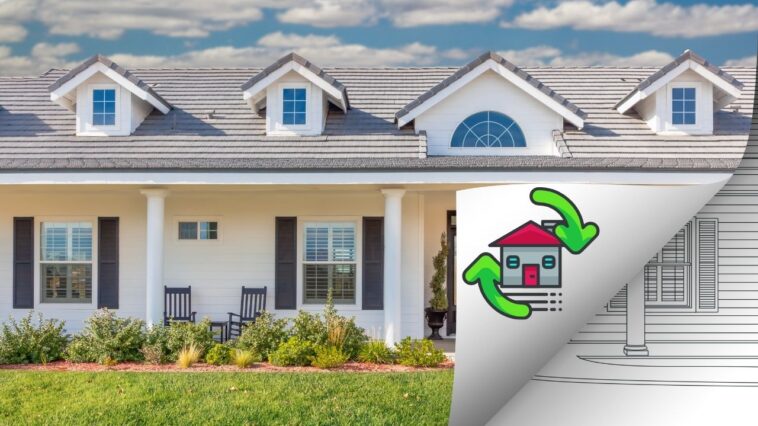House Flipping is a type of investment that entails an investor acquiring a property, improving or refurbishing it and later selling it for profit. The investment can be rewarding if done appropriately, but it entails a scope of strategy, market knowledge, and recognition of potential drawback. This guideline offers a detailed explanation of the activities involved in flipping a house including the looking for a property and selling it at the highest price possible.
House Flipping Explained
What is House Flipping?
House flipping can be understood as the process of acquiring a property for a lower amount of price due to several conditions especially the damages which the house might have sustained or the market price of the house, making it much more aesthetically pleasing and rather functional through several repairs and renovations and then selling it at a much higher price. The most important principle in flipping is the following: buy low, renovate prudently, and sell even higher.
Sub Kinds of House Flipping
- Fix and Flip: This is where an investor acquires a property which requires either huge repairs or complete renovations, does the repairs and re-sells at a profit. This calls for a good insight of what renovation will cost and how long it will take.
- Buy and hold for appreciation: Real Estate investors, in this strategy, buy a property, do minor renovations and hold it for a while to take advantage of appreciation before disposing it off.
Benefits of House Flipping
- Potential for High Returns: There are substantial profits if one follows all the appropriate procedures as many homes are acquired in a small duration.
- Hands-On Experience: Nowhere is this more demonstrated than in house flipping where the one renting the property is also very actively involved in renovations or constructions.
- Opportunity to Learn Real Estate Market Dynamics: House flipping activities enable individuals to gain helpful skills on valuing properties, bargaining, managing construction processes, and analyzing real estate markets.
Risks of House Flipping
- Market Fluctuations: On the other hand, downtimes of any property market can target the sale profit estimate downsizing negatively impacting revenue.
- Unexpected Costs: Sometimes physical improvements can go over budget due to unexpected problems working against code, structural issues, or pest control.
- Time-Consuming: Thus there is a lot of time required in house flipping to include time of attending to renovations or inspection or getting approvals or advertising the home for sale.
Procedure for Successful House Flipping
Know The Booming Real Estate Market
It is important to understand at what exactly house flipping is before starting with it. Relevant skills include the following:
- Neighborhood Factors continue: Look for areas where there is a high demand from the residents to buy houses, prices of properties are rising, and rates of crime are considerably low.
- Demographics Of Buyers In Focus: Before making any investment in a property in the area, find out what types of people are interested in the area such as young families, young adults starting in their professions or the elderly.
- Seasonal Aspects: Prices of properties in the real estate market are always on the rise and fall according to certain times of the year. It is important to know when one should buy or sell to increase total returns.
Create An Effective House Flipping Business Plan
There is a great need of having a business plan in house flipping in order to accomplish successful results. There should be in this plan:
- End-goals: Be precise with actions you wish and want to achieve after a certain period of flipping by having a specific profit.
- Costs: State the extent of your willingness to pay towards buying, fixing up, and holding on to the property under prospects of reselling in future.
- Means Of Financing: Make up your mind how you are going to buy property and undertake renovations on it, using either your sweat equity, loan, hard money or joint partners.
Raise Funds
There are several forms to finance a flip of a house:
- Conventional Loans: Best for individuals with great credit alongside good amount of their own cash to place as equity. These loans usually are of lower rates but involve long periods of approval.
- Hard Money Loans: These are short term loans extended by private money lenders to investors who wish to get the property quickly. However, they charge high fees and are best used for a fast flipping of properties.
- Cash Purchases: If there is a good chunk of money to purchase this property then the wise thing to do is pay cash because it also gives the investor a good level of negotiation.
- Private Lenders & Partnerships: There is always an option of borrowing money from private persons or joining partners in case of making considerable amounts however just the same as trust they have to be built and a clear agreement made.
Find the Right Property
The highest determinant of a flip’s success is getting the right property. Some critical aspects include:
- Location: Follow the common trends by buying in desirable emerging neighborhoods and good school districts.
- Property Condition: Try and find properties that only require painting or simple carpentry and interior decoration rather than demolition and major carvings of the house. This goes a long way in limiting the amount used for renovations.
- Pricing: When buying properties, do so at a discount so that it is possible to allow a cost for renovations and still retain a profit margin.
- Exit Strategy: Analyze within your flipping strategies if the property will regain its requirement from massages after the renovations.
Carry Out a Detailed Examination of the Site
You should also carry out a professional inspection of the property to determine any underlying problems that could lead to increased renovation costs. They will include:
- Foundation and Structural Defects: Determine whether there are any cracks or shifts with the foundation or signs of foundation issues.
- Roof and Exterior: Determine the roof’s status and check forging walls and roof leaks and to what extent there are worn out shingles.
- Plumbing and Electrical Systems: Look for leaks, broken piping and wiring which do not meet the required standards.
- Interior and Cosmetic Condition: Inspect the state of walls and floor coverings, ceilings, and the like.
Prioritize on the Renovation Processes and Make a Plan
It is through renovations that the greatest fraction of the flipping process takes place. A proper renovation plan should include:
- Scope of Work: Detail the repairs and improvements that are required to help in raising the value of the property. Concentrate on the aspects that give higher returns for instance the kitchen, bathrooms and the outdoor appearance.
- Budget: Prepare a reasonable budget for every renovation activity with regards to materials, the workforce, permits and some extra funding for unforeseen expenditures.
- Time Management: Each phase of the renovation should be assigned a timeline in order to protect against delays which may raise carrying costs and decrease profits.
- Contractor Acquisition: Screen and hire legitimate contractors, source for a few quotations, and check to ensure the contractors have a license, carry the proper insurance and have performed the specific renovation before.
Carry Out The Renovation
Whenever the planning is over, it is the right time for performing the renovation:
- Permits and Approvals: Make sure all required permits from local government have been acquired before commencing any serious work.
- Monitor Progress: Visit the place frequently to check on the work, the workmanship, and any problems which may have arisen.
- Stay Within Budget: Ideas for improvements and changes are good but if they are the kind that do not work on water risks using up unnecessary resources, it is preferable not to do them.
- Focus on Curb Appeal: Ensure the lawns, widows or walls remained painted, and plant flowers to enrich the exteriors as first impressions tend to last longer going by the old saying.
Stage and Market the Property
Staging and marketing strategies are beneficial in identifying potential customers as well as obtaining the maximum selling price:
- Staging: Bring in a professional stager or do it yourself and dress the furniture with decorators and other accessories that will inspire the buyers. Staging is important because it allows buyers to picture themselves in the space.
- Photography and Virtual Tours: These are essential in attracting the interest of prospective buyers or tenants when the property is being marketed online.
- Posting and Advertising: Collaborate with a realtor in ensuring the property is listed in a number of sites including MLS, twitter, and real estate achievement sites.
- Open Houses and Showings: Conduct open houses and arrange showings for potential buyers with the hope to create an element of competition.
Sell the Property
Once everything has been done in the projection, we are ready for the last phase of the project: the selling of the property.
- Set a Competitive Price: Evaluate the property based on the market and recent sales of similar properties in the region. Do not set an exorbitant price as it may result to prolonging the listing period of the property.
- Negotiate Offers: Expect potential buyers to make offers and all you need to do is to respond. In this regard, take into consideration various factors such as the buyer’s financial status, and any contingency clauses and when the buyer needs to close the deal.
- Closing the Deal: The assistance of a real estate lawyer and title company will help ensure that all documents are completed. Do not forget to include in the assessment costs such as closing cost, agent’s commission fee and all the final repairs as well as any other concession made to the buyer.
Compute Profit and Contemplate on the Flip
Once the property has been sold, compute the net profit by subtracting the purchase, renovation, holding and disposal cost from the final sale. Ponder upon the procedure:
- Evaluate the Success: Assess whether the flip met your financial and personal goals.
- Identify Lessons Learned: Consider what went well and what could be improved for future flips.
- Plan for Future Flips: Use the insights gained from this experience to refine your strategies and business plan for the next flip.
Conclusion
Flipping houses can be a highly profitable real estate investment strategy, but it requires careful planning, market research, and a good understanding of the risks involved. By following this detailed guide and making informed decisions at every step, you can increase your chances of success.


